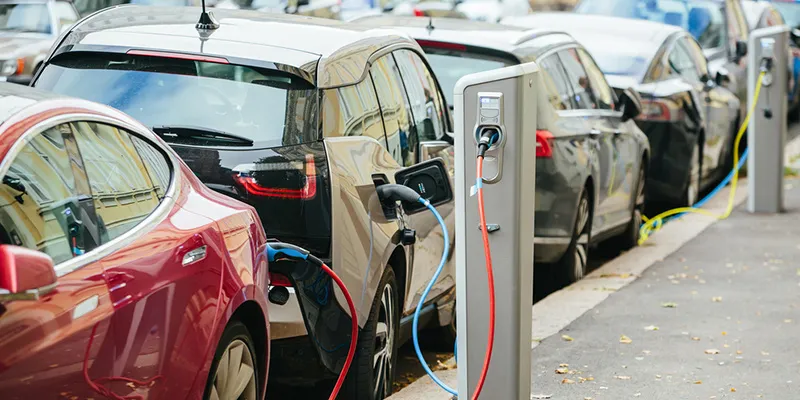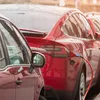The classic vehicle has transformed into a software-defined IoT device: Elektrobit’s Gregor Zink on disruptive mobility
The senior leadership from Elektrobit, a world leader in embedded systems for the automobile world, tell YourStory what the company is doing in automobile tech to shape the future of mobility.
Automotive mobility is finally adapting itself for the future, quickly embracing the twin goals of sustainability and technology adoption. The greater use of sustainable solutions to reduce emissions, and incorporating technology to ensure a safer, ‘smarter’, and more connected drive is providing automakers, suppliers, and technology firms with new business opportunities.
German automotive giant Continental AG acquired Elektrobit Automotive GmbH for €600 million ($677.5 million) in 2015 to meet the growing demand for electronics and safety technology in 2015. Elektrobit supplies embedded software solutions and services for car makers, and is in the thick of the action.
In a recent interaction with YourStory, Gregor Zink, Executive Vice President, Finance and Business Support, and Managing Director, ElektroBit and Satish Sundaresan, Vice President, Elektrobit Automotive GmbH & Managing Director, Elektrobit India delved into the new world order of software changing the mobility industry.
Edited excerpts of the interview:
YourStory: How is software redefining the future of mobility?
Gregor Zink: The automotive industry is currently undergoing a disruptive change. Driven by electrification, automated driving, and connectivity, the classic vehicle is being transformed into a software-defined internet-of-things (IoT) device. Personalisation, connectivity, and mobility-as-a-service are becoming more and more important for end customers.
The amount of software in the vehicle will continue to increase, as will its complexity. The underlying software in a modern vehicle already contains approximately 150 million lines of code. In 2013, only around 10 percent of a car's total value was based on its software; by 2030, this figure will increase to around 30 percent.
The future of driving rests on re-designing the core architecture of the car, as well as re-thinking the software that powers it. Safety and security create additional requirements for the software architectures of the future. The connection to the cloud makes it possible to bring new services into the vehicle in the form of mobility-as-a-service.
Due to the focus on these software-defined systems and business models, the vehicle architecture is changing from complex distributed systems to high-performance domain and zonal architectures. This transition allows IoT technologies to be transferred to the vehicle. In addition to scalability, these architectures have a focus on updating and upgrading capabilities.
Powering over one billion devices in more than 100 million vehicles and representing a 30-year history as a software pioneer and innovator for leading car manufacturers and suppliers, Elektrobit is well positioned to help original equipment manufacturers (OEMs) and Tier I suppliers make this transition. It is the trusted provider of embedded and connected software for future automated cars.

Gregor Zink, Executive Vice President, Finance and Business Support, and Managing Director, Elektrobit
YS: Since your acquisition, what kind of work has Elektrobit done for Continental? Can you substantiate some case studies?
GZ: Elektrobit remains an independent subsidiary of Continental and continues to work on projects for many Tier I suppliers in the industry. And Continental is treated as another important customer for Elektrobit.
Elektrobit works on the digitisation of a model line for Volkswagen. We’re working on ensuring that our software makes the vehicles safer and more reliable while also enabling the convenient use of innovative cloud-based services. This cooperation between Volkswagen, Elektrobit, and Continental has a model character that shows how we can successfully shape the future of mobility together in the context of complex transformation.
Another example is where Elektrobit recently completed a project to help Continental expand its global test drives and support data logging for its advanced driver-assistance systems (ADAS) and automated driving product validation. The test and validation of automated vehicles is a complex task that requires millions of test miles to be run through and involves large amounts of data to be processed due to a high number of environmental sensors needed for automated driving.
We also developed a holistic solution based on EB Assist CAR Box, our automotive-grade PC platform, for high-precision data logging, replaying and simulation of driving scenes.
YS: What role are these technologies playing in the automotive industry?
Satish Sundaresan: Elektrobit is still learning about blockchain for smart contracts and its applicability in the automotive electronics space. It will be disruptive and most automotive organisations need to be better prepared.
Advanced artificial intelligence (AI) is needed to make self-driving cars a reality. Manufacturers require extremely powerful hardware coupled with AI systems that emulate—and exceed—human driving skills.
One challenge is the sheer amount of on-road testing needed to validate self-driving technology. Automated driving functions, in-car systems, and AI software all need to be rigorously tested and improved in order to bring this new technology to a worldwide market. Vehicles must demonstrate they can drive safely and take reliable emergency measures under unpredictable driving conditions. As a result, auto manufacturers have collected almost a billion miles of test-driving data in the last five years alone. However, many more miles are required in order to truly validate the technology. To this end, manufacturers are also employing driving simulations to accelerate the testing process.
To help meet this challenge, Elektrobit has developed EB Assist, hardware, and software products to successfully develop reliable automated and autonomous vehicles. This allows car makers to validate and improve their vehicles more quickly—and bring self-driving cars to market much sooner. Imagine a networks operations centre for an OEM (like the kind IT organisations host), where data from every test car can be automatically used to learn what is working and what is not, and even logs in defects in a defect management system intelligently!
YS: How is Elektrobit addressing security?
SS: With regard to security, Elektrobit started 2019 by announcing its collaboration with our subsidiary, Argus Cyber Security, and NXP Semiconductors to bring to market the industry's first complete software-hardware solution that delivers comprehensive protection against even the most sophisticated cyber attacks.
With vehicle safety as the highest priority, we believe it is critical that OEMs have the ability to provide passengers with optimal defense against cyber threats. The combined solution enables car makers to comply with upcoming regulations and current guidelines that require equipping vehicle systems with the ability to detect and respond to cyber security incidents.

YS: Tell us about how voice-based technologies are used in the automotive industry.
SS: Voice-based technologies and user interface are still sought-after features. At CES 2019, Elektrobit demonstrated Amazon Alexa integrated with EB software, providing a compelling and consistent speech interface and experience in the car. Our software experts extended the capabilities of a standard Amazon Alexa integration, enabling the service to be proactive and alert drivers of incidents on the road and assist in the handover between autonomous and manual modes of driving.
YS: What about cloud connectivity for vehicles?
SS: The ability for two-way communication between the vehicle and the cloud offers a myriad of possibilities. This enables car-to-car, car-to-infrastructure, and many such combinations. Consumers can get the up-to-date content they expect such as the latest maps and the latest software features. Carmakers can gather diagnostic data from vehicles on the road to detect, analyse, and address issues.
Data gathered from the car can then be sent to the servicing dealer ahead of time to help improve scheduling and provide faster and better service. Imagine driving down Bengaluru roads and your car being able to circumvent traffic in real time based on traffic gridlocks, road conditions, weather forecast, and, most importantly, also regulate signal times based on which part of the road has a higher density of traffic. All this while continuously monitoring the health of your car!
Beyond that, carmakers can crowd-source information from vehicles on the road and throughout their lifecycle, then apply big data techniques for a host of purposes. They can learn what features are popular with drivers, the kind of driving consumers do and how the car and specific components respond, and what issues can or should be addressed in new models to save money or head off potential bigger issues, like recalls.
EB provides technologies that connect the car to the cloud like our EB cadian Sync, which offers secure over-the-air updates for a vehicle’s entire lifecycle. Solutions such as this create new business models for carmakers, enabling them to offer “upgradeable” vehicles equipped with the hardware needed for a variety of exclusive features.
YS: How are automotive companies integrating the connected car? What kind of work has Elektrobit done in this field?
GZ: The connected car is the most disruptive technology in the automotive industry today. It offers great potential. Combining car functionality with software solutions creates a connected car that can navigate traffic, significantly reduce vehicle defects and warranty costs, and enable new business models.
Online connections in the car offer the driver and passengers new, convenient services. These services add significant value to the OEM by distinguishing its brand from the competition.
Elektrobit provides technologies like EB cadian Sync, which connect the car to the cloud, and offers secure over-the-air updates for a vehicle’s entire lifecycle. Solutions such as this create new business models for car makers, enabling them to offer ‘upgradeable’ vehicles equipped with the hardware needed for a variety of exclusive features.
YS: How are you working with NXP and NVIDIA in the future of mobility?
GZ: Elektrobit works with many embedded hardware providers, and NXP and NVIDIA are among our key partners. Car makers and suppliers are under increasing pressure to bring advanced automated and connected technologies faster to the market.
Yet, these applications require more processing power and more complex software than ever before.
Since 2018, Elektrobit and NXP are working together to address this challenge and enable virtual development of ECUs for connected and automated driving. With this high-performing, safe automotive processing platform, carmakers and suppliers can more easily develop future applications for connected and automated driving, reducing both time and costs.
YS: What are the trends in electric mobility and how are you readying yourself for them?
GZ: We will continue to see an increase in the production of electric vehicles. In late December, VW announced further details of its “electric offensive” toward development of 15 million electric vehicles in its new ID. line. Elektrobit was included in the VW announcement as being one of the key software companies that VW is working with.
We foresee a change in vehicular architecture and hence are gearing towards catering to future needs in this direction. Higher speed and greater bandwidth are challenges that need to be resolved by car manufacturers as well as vehicular health and range extension for electric vehicles. We are well positioned to service the needs of the changing automotive industry on that front.

Satish Sundaresan, Vice President, Elektrobit Automotive GmbH & Managing Director, Elektrobit India
YS: You have 10 products serving the automotive industry. How is this stack of products evolving into a single product?
SS: While we don’t have any plans to evolve our products into one single product, we do take pride in partnering with our customers to provide support for their entire product lifecycle, providing end-to-end solutions and services, and always staying at the forefront of technological innovation. This also implies that our products need to be inter-operable and we are already in the process of ensuring that our customers can procure all our products and ensure that they work together, where applicable.
YS: What are your plans for the next two years globally and what are your plans in India?
SS: Globally, we would like to consolidate our position as a preferred partner for our customers in our areas of operations, while expanding our knowledge base in all our global sites, including India.
Elektrobit India is a key location to help scale our global business and grow as an Asian development hub. The availability of the talent pool in India was one of several compelling reasons to come to India in 2016 and with the success we have had, we want to consolidate and make India one of our largest and most important R&D locations for Elektrobit. We are investing in knowledge build-up and infrastructure to also tap into the innovative minds of our engineers in India.
The automotive market generally in Asia, and India in particular, is transforming interestingly and our intent is to be more meaningfully engaged in this local market. Therefore, we are gearing up to cater to the local Indian market needs, in the areas of training, local product sales, product localisation, customisation, and even consulting.
(Edited by Evelyn Ratnakumar)









